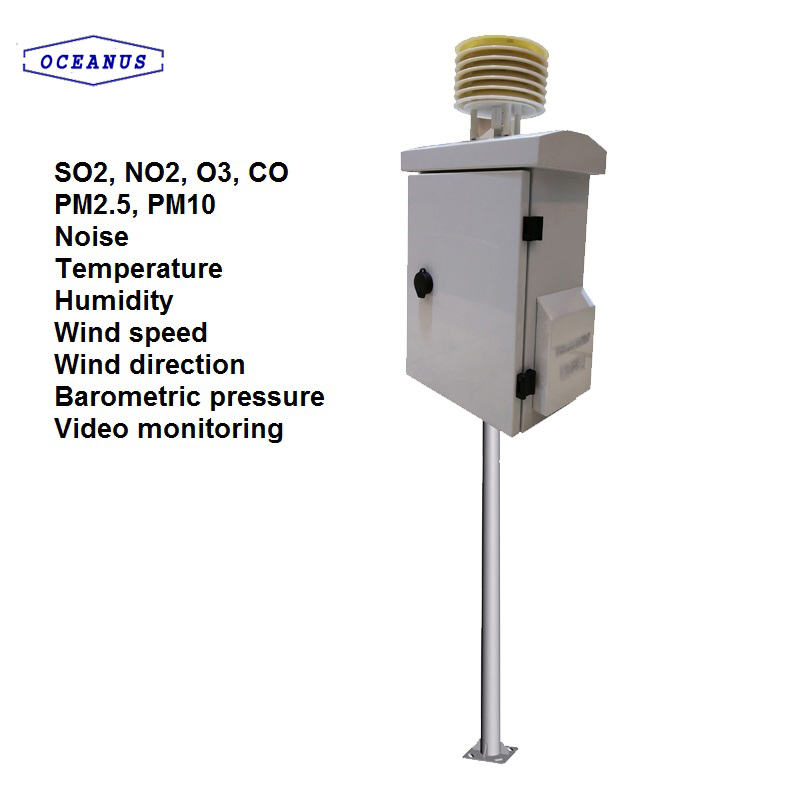Why Monitor Air Quality
Air is essential to life. Poor air quality threatens the health of all living things from humans to plants. There are many types of air pollution, and each have a different effect on human health. The two most common types of air pollution in the United States are ozone and particle pollution. Both irritate the respiratory system, making it difficult to breathe, but can also have a more serious impact on health.
Ozone is a colorless gas that forms when emissions from cars, power plants, and industry react with sunlight. Ozone is a major component in urban smog. Ozone pollution irritates the respiratory system, causing coughing and throat irritation, makes breathing difficult, aggravates asthma, and can inflame and damage the lining of the lungs over time.
Particle Pollution is any kind of particle or liquid droplet in the atmosphere. Particle pollution, or aerosols, has many sources. Fine particles, small enough to get into the lungs, primarily come from combustion in cars, power plants, fires, and industry. Coarse particles tend to have natural sources such as dust or sea salt. Particle pollution may aggravate heart and lung disease. The number of hospital visits associated with lung and heart disease goes up when particle pollution is high. Particle pollution is associated with heart attacks and cardiac arrhythmias, causes difficulty breathing, and makes people more susceptible to respiratory infections.
Air quality can have such a big impact on health. But air quality was not the same everywhere. Pollution can build up in isolated pockets, and local sources (an industrial plant or a busy road) can add to the overall poor air quality.
Air quality fluctuates from day to day for a number of reasons. Most obviously, air quality changes if more pollutants are put into the atmosphere. A large event such as a dust storm, wildfire, or volcanic eruption can dramatically darken the skies. Emissions also climb when energy demand goes up as it does on hot days. Scientists have also noted a weekly cycle in emissions dependent on local culture. In the United States, for example, air quality tends to be better on Saturdays and Sundays when fewer cars are on the road and electricity demand is lower because fewer businesses are operating.
Second, concentrations of pollutants in the atmosphere depend on the weather. Since sunlight is a necessary ingredient in ozone formation, ozone pollution levels tend to be highest during long summer days. A weather inversion, when warm air is trapped beneath a layer of cooler air, also leads to poor air quality since surface air has nowhere to go. Pollutants build in the pocket of trapped air.
Finally, air pollution can have a local source, such as a power plant or factory, or it can come from somewhere else. Smoke from western wildfires can impact air quality in the Eastern United States. Dust from Africa clouds Florida’s skies, and haze from Asia can reach the U.S. West Coast. Satellites have been instrumental in tracking pollution as it travels from place to place around the globe.
Any problem that threatens our health is not a small problem. Environmental issues are getting more and more attention. The EPA and the Environmental Monitoring Center can implement real-time monitoring of air quality through data from air quality monitoring stations.
Our main products are industrial instrumentations, including of the Gas detection system(including of the Fixed gas detector, Portable gas detector and Gas detection controller), Air quality monitor system and other instruments.
If necessary, pls contact us: Email: info@china-oceanus.com; Tel: +86-371-60998169
- Pre:Ambient air monitoring is very important 2019/7/17
- Next:New portable gas detector with inner pump 2016/4/11





